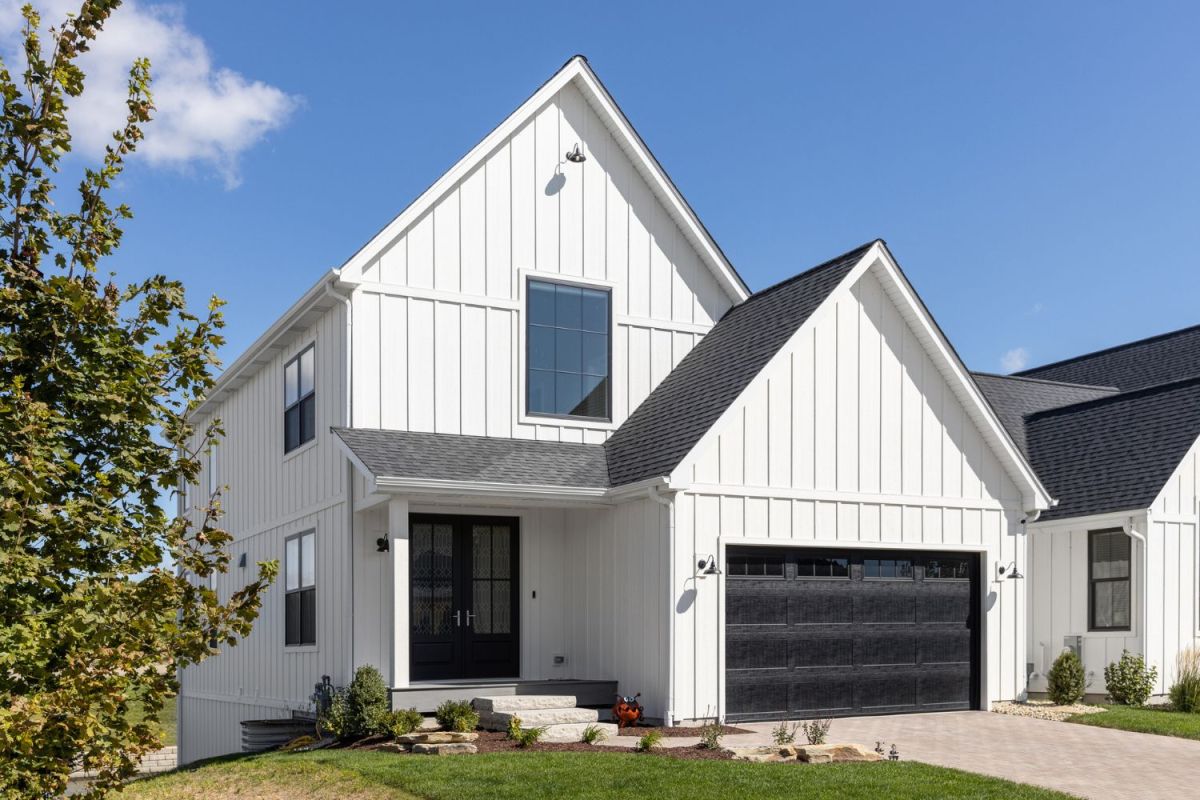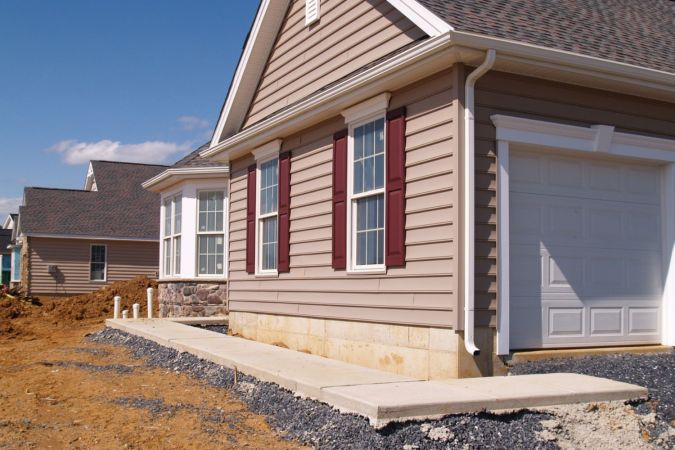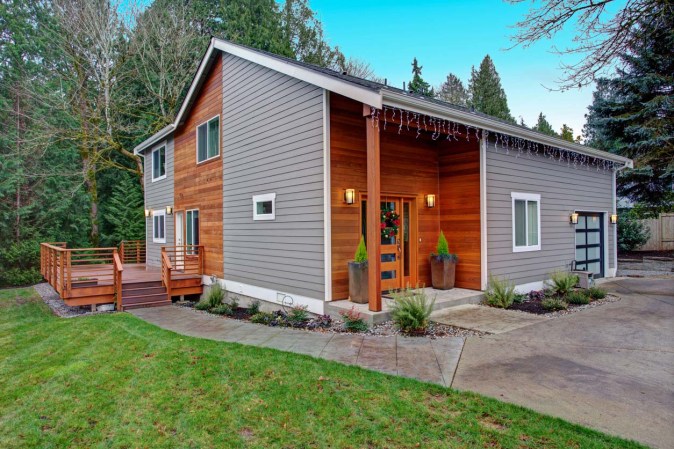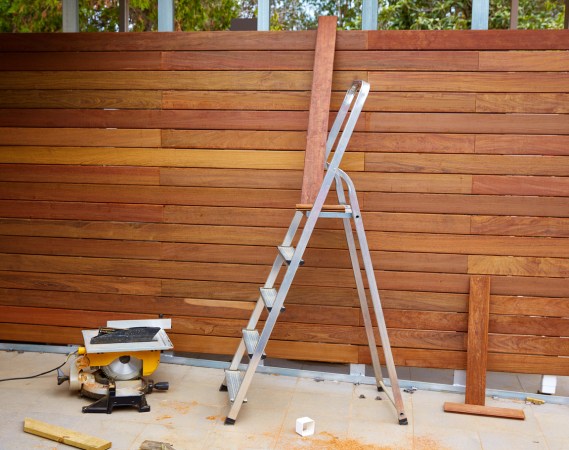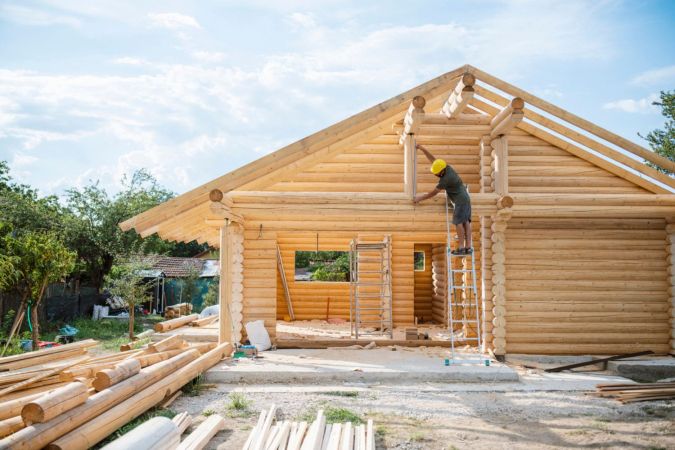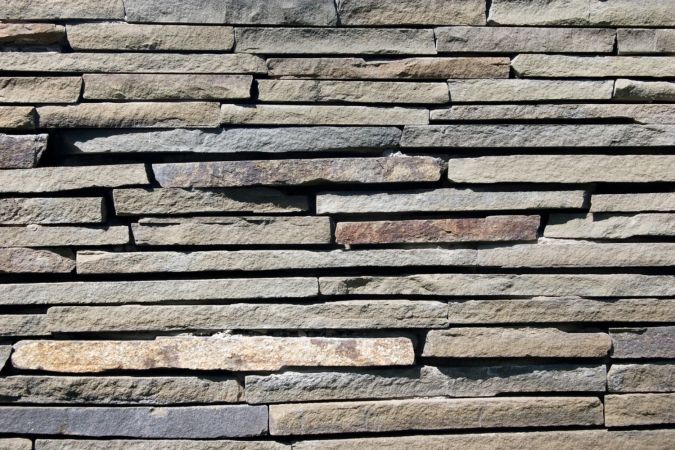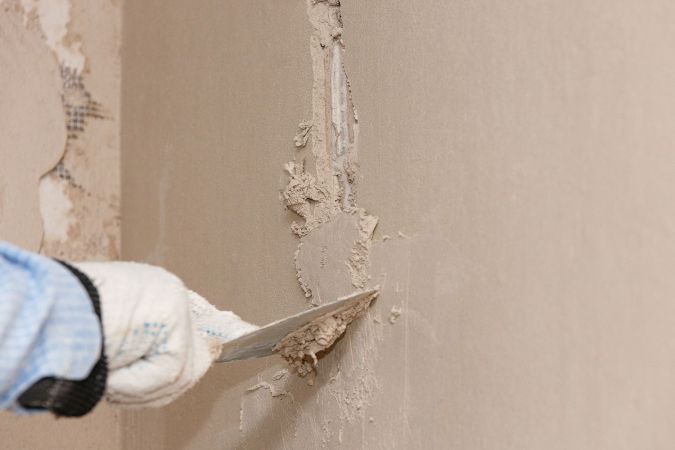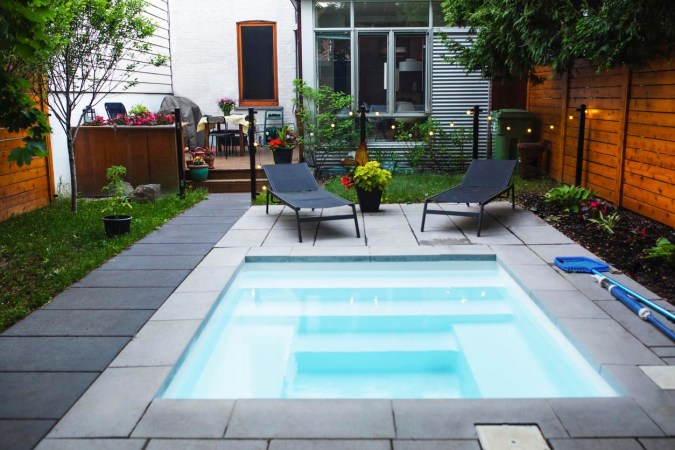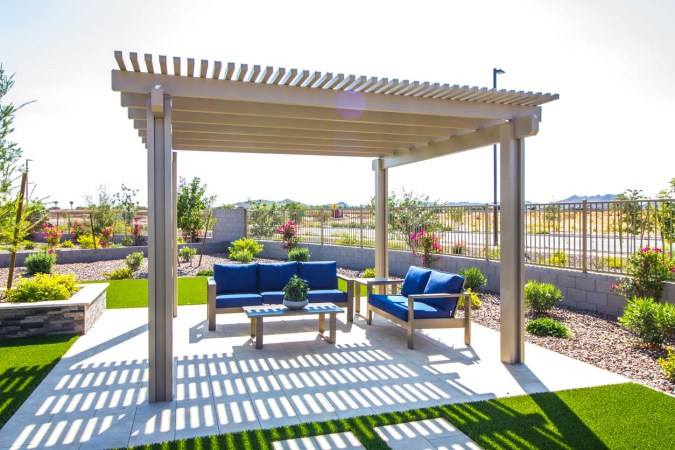We may earn revenue from the products available on this page and participate in affiliate programs. Learn More ›
Highlights
- It typically costs between $4,000 and $14,000 to install board and batten siding, while the national average cost is $9,000.
- Some of the factors that can affect board and batten siding cost include the size, design, and accessibility of the home; the siding material; and the cost of labor.
- Board and batten siding has numerous benefits, such as durability, longevity, increased curb appeal, easy maintenance, damage resistance, and customization options.
- While a handy homeowner with siding installation experience might be able to complete board and batten siding installation as a DIY project, homeowners without this experience will want to hire a pro.
Before homeowners start a home renovation project, it’s important for them to have a basic understanding of the installation process, the materials involved, and the costs, so the first question to ask is: What is batten board siding? Batten board, or board and batten siding, is a type of exterior finish that uses an alternating pattern of wide boards and narrow strips called battens. This configuration helps to strengthen the siding while improving the exterior insulation of the home.
Board and batten exterior siding became popular in the Victorian era for building structures like barns and garden sheds because the siding was relatively easy to assemble and, at the time, it was an affordable option. However, since its introduction, the cost of installing board and batten siding has increased; according to Angi and HomeAdvisor, homeowners can expect to pay about $4,000 to $14,000, or about $9,000 on average. Homeowners can use this guide to learn more about the various factors that can affect siding installation cost, allowing them to better understand how board and batten siding cost is calculated and to put together a comprehensive budget for this project,
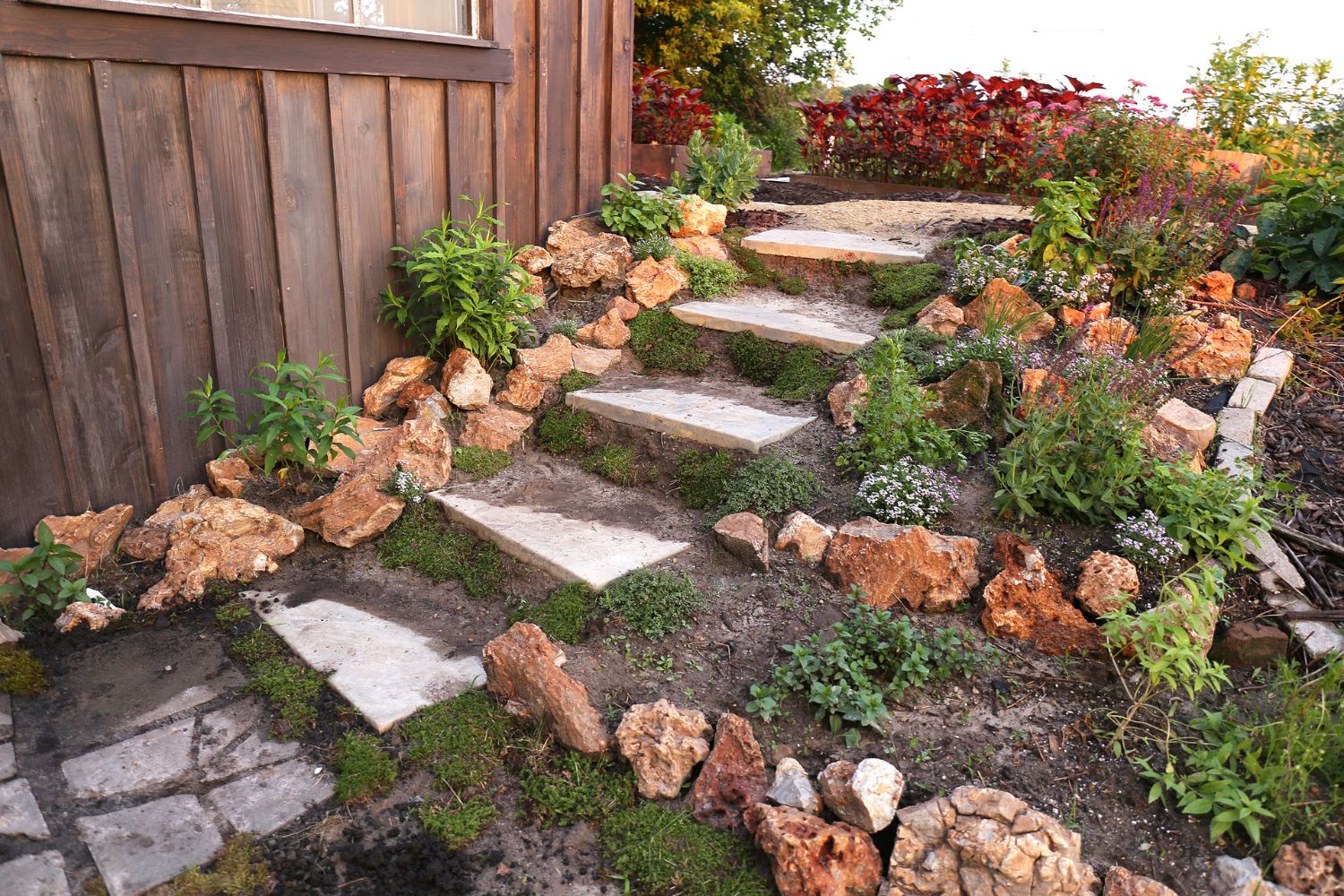
Factors in Calculating Board and Batten Siding Cost
There are several primary factors involved in coming up with an accurate project budget for board and batten siding, including the size of the home, the exterior design, access to the outside of the home, the siding material, and the local labor rate for this type of renovation project.
Home Size
The exterior siding for a home typically wraps all the way around the house, stretching from the first floor up to the top story, though some homeowners may choose to use board and batten siding to create accent walls due to the attractive design. The difference between these style options can significantly affect the cost of the project, so it’s a good idea for homeowners to take general measurements of the installation area to find out the approximate square footage of the job. On average, board and batten siding materials cost about $1 to $10 per square foot, while the installation of board and batten siding, including labor, costs between $2.50 and $12.50 per square foot.
| Home Size | Average Cost (Materials Only) |
| 1,000 square feet | $1,000 to $10,000 |
| 1,500 square feet | $1,500 to $15,000 |
| 2,000 square feet | $2,000 to $20,000 |
| 2,500 square feet | $2,500 to $25,000 |
Home Design and Accessibility
Replacing the siding on an old barn or shed is relatively straightforward because these structures typically have a very basic design. However, when it comes to installing new board and batten siding on a residential home, there is a high chance that the installers will be dealing with a more complex architectural design, which means that they will need to spend more time preparing materials, setting up ladders, and working in tight or difficult spaces.
The more complex the home design, the longer it will take to complete the job, which means increased house siding costs. Similarly, if the home has a large number of windows, doors, air vents, or any other breaks in the siding, the cost of the materials may increase because the installers will need extra trim, flashing, and caulking.
Siding Material
There is a wide variety of board and batten siding options to choose from, including cedar, cypress, pine, redwood, fir, engineered wood, fiber cement, aluminum, steel, and vinyl. With such a broad range of siding material choices, it’s recommended that homeowners research the best siding material for their home based on longevity, durability, maintenance, and cost.
On average, homeowners can expect to pay about $1 to $10 per square foot in material costs for a board and batten siding job. If the budget is already stretched thin, they may consider opting for a more affordable siding material, such as fiber cement, cedar wood, engineered wood, or vinyl, for the renovation project.
Labor
DIYers with substantial skill and experience with siding jobs can reduce the overall cost of the project by completing the siding installation without help from professional installers. This will help save about $1.75 to $2.25 per square foot on the total project cost. However, for those who do not have the time, skill, or experience to handle this job on their own, hiring a professional installation company is the best option.
The trained and experienced installers will be able to assess the property, come up with a cost estimate, recommend materials, and provide the homeowner with a basic timeline of completion. Additionally, siding installation companies often offer product warranties or a guarantee on the work so that if anything goes wrong with the installation, the homeowner is not held responsible.
Additional Costs and Considerations
While the primary cost factors tend to have the most influence on the final cost of the project, there are a number of secondary cost factors to consider, such as the extra cost to remove existing siding or the difference between installing standard board and batten siding and reverse board and batten siding. Homeowners will want to find out more about these additional costs before starting a house siding installation project.
Existing Siding Removal
When homeowners are installing board and batten siding at a new home, there is no need to worry about removing the existing siding, but for an older home, there may be siding that needs to be removed before the project can start. Some installation companies will handle this part of the job, though it will typically cost about $0.70 to $2 per square foot to remove and dispose of the old siding.
Avid DIYers may see this as an opportunity to reduce the overall labor cost of the project by removing the existing siding by themselves instead of leaving it to the installers. However, it’s important to note that the homeowner will still likely need to rent a dumpster to collect and dispose of the old siding material, which can cost about $280 to $500 per week.
Standard vs. Reverse
There are two common installation configurations for board and batten siding, including standard and reverse installation. There are not any significant differences in the installation time, labor costs, or maintenance requirements, so the final decision will come down to homeowner preference.
- Standard board and batten siding is typically installed with large boards and small battens that cover the gaps between the boards. This is a well-known and appreciated design choice for a more classic home aesthetic.
- Reverse board and batten siding is essentially the opposite in that it uses smaller boards and broad battens to offer a different exterior aesthetic. This type of board and batten siding is commonly used to give the home a more modern look.
Painting, Staining, or Sealing
Homeowners will want to discuss the care and maintenance requirements for the selected board and batten siding material before starting the project. Depending on the material used for the installation, the installers may need to paint, stain, or seal the material to protect it from UV radiation and moisture.
Some DIYers may choose to take on this part of the job themselves, while others may decide to hire a professional painter, which can cost between $1,800 and $4,300. Similarly, it will cost between $5 and $15 per linear foot for a professional to seal board and batten siding.
Permits
Not all home renovation projects require a building permit. In fact, permit requirements can even vary between towns and municipalities, so before starting a board and batten siding installation job, homeowners will want to call or head to the local permit acquisition office to determine if a permit is necessary for the work being completed at the home.
If a permit is required for the board and batten siding project, homeowners can expect the permit to cost about $471 on average. Before purchasing the building permit, they’ll want to speak to the contractor if they will be handling permit acquisition and to find out if there is an additional fee associated with the permit.
Repairs and Maintenance
After the board and batten siding installation, it’s up to the homeowner to keep up with cleanup, repairs, and other maintenance tasks. If it’s properly maintained, board and batten siding can last for decades without needing to be replaced.
This includes patching small cracks, repairing or replacing loose boards, fixing water damage and warping, as well as removing any mold that has grown behind the siding. Additionally, the homeowner will need to clean the board and batten siding about once or twice a year and repaint, restain, or reseal the siding every few years to ensure the ongoing protection of the home.
| Maintenance Tasks | Average Cost (Materials and Labor) |
| Loose board repair | $100 to $150 |
| Mold removal | $700 |
| Repainting or restaining | $1,800 to $4,300 |
| Resealing | $5 to $15 per linear foot |
| Small crack repair | Under $100 |
| Water damage and warping repair | $120 to $600 |
Types of Board and Batten Siding
Wood board and batten siding is a common option, but there are other types of board and batten siding for homeowners to choose from, differentiated based on the primary material. Other material choices include board and batten vinyl siding, board and batten metal siding, and even board and batten fiber cement siding. Learning about these various material options can help homeowners decide on the right type of siding for the job.
| Board and Batten Siding Type | Average Cost per Square Foot (Materials Only) |
| Cedar | $2.80 to $3 |
| Cypress | $4 to $21 |
| Engineered wood | $2 to $5.50 |
| Fiber cement | $0.75 to $5 |
| Metal | $3 to $8 |
| Pine, redwood, or fir | $3 to $10 |
| Vinyl | $2 to $7 |
Cedar
Cedar is a popular choice for board and batten siding because it’s relatively inexpensive but still looks good and lasts for 20 to 40 years with proper care and ongoing maintenance. Homeowners who are interested in cedar board and batten siding will pay about $2.80 to $3 per square foot for this material.
Homeowners will want to keep in mind that this does not include the cost of labor to install the siding. Opting for cedar board and batten siding is a good choice for those who want a traditional wood exterior for the home. It also provides the ideal surface for painting or staining projects, allowing homeowners to customize the look of the siding.
Cypress
Similar to cedar, cypress board and batten siding can last for 20 to 40 years when it is properly cared for and maintained. However, there is a stark difference between the cost of cedar board and batten siding and the cost of cypress wood for this project, so while cedar is a great choice for those on a tight budget, cypress is better for homeowners with a more flexible project budget.
Homeowners who opt for cypress will typically pay about $4 to $21 per square foot for the materials. This material is the most expensive option for board and batten siding. The cost of cypress is high because it’s in high demand; the wood is easy to cut, long lasting, durable, and resistant to both UV radiation and moisture.
Engineered Wood
Instead of installing natural wood products, like cedar or cypress, some homeowners may choose to use engineered wood siding. Engineered wood board and batten siding is one of the more inexpensive choices, ranging from just $2 to $5.50 per square foot. This price does not include the cost of labor or any other installation materials, such as trim, flashing, or caulking.
Engineered siding is made out of a combination of wood fragments and a bonding agent, giving the material a high resistance against moisture and UV radiation. However, the drawback to this design is that the material is not as durable as natural wood and lasts for only about 20 to 30 years.
Fiber Cement
Installing fiber cement board and batten siding is one of the best choices for homeowners who are looking for a set-it-and-forget-it exterior siding option. This is because fiber cement siding is highly durable and can last up to 100 years without needing to be replaced.
The material is made with a mixture of sand, cement, and wood cellulose to produce a resilient siding option that can hold up for decades under rain, sleet, snow, and direct UV radiation. Homeowners who find this type of board and batten siding appealing will want to be aware that fiber cement costs are relatively affordable at an average rate of $0.75 to $5 per square foot for the materials.
Metal
Metal may not seem like the first choice for board and batten siding, but both aluminum and steel are commonly used for this purpose. Metal materials have the benefit of lasting longer than most wood products, as well as having a higher resistance to UV radiation.
This type of board and batten siding is also easy to clean and maintain, though it’s important for homeowners to watch out for any signs of rust. If the siding begins to rust, there are treatments available that can be applied to protect the metal. However, severely rusted siding will need to be replaced. Homeowners will typically pay about $3 to $8 per square foot for metal board and batten siding materials.
Pine, Redwood, or Fir
Beyond the standard cedar and cypress board and batten siding options, there are several alternative natural wood products to choose from, including pine, redwood, and fir. These natural wood options cost about $3 to $10 per square foot for materials and are not as durable or resilient as cedar or cypress.
With this in mind, it’s essential that the installer or homeowner apply a sealant to the board and batten siding to protect the wood from UV radiation, moisture, and mold growth. It’s recommended that homeowners repaint, restain, or reseal the siding about once every 2 to 3 years to keep it in good condition for decades.
Vinyl
Vinyl board and batten siding is a popular choice due to the wide variety of color and texture options that are available. Homeowners can even get a customized color or texture to suit their personal tastes when opting for vinyl siding. At $2 to $7 per square foot, vinyl siding costs can fit into most budgets.
For those who like the look of natural wood but prefer the high UV resistance and moisture resistance of vinyl, there are vinyl board and batten siding options that are made to mimic the appearance and texture of wood. Homeowners will want to keep in mind that while vinyl can last as long as natural wood, it’s not as durable or resistant to impact damage.
Benefits of Choosing Board and Batten Siding
Before installing board and batten siding, homeowners will want to take some time to consider whether this exterior finish is beneficial for the home. Among the many factors to consider are its durability and longevity, increased curb appeal, maintenance requirements, damage resistance capabilities, and possible customizations options. These include a range of board and batten siding colors as well as the choice between board and batten vertical siding and horizontal siding.
Durability and Longevity
The exterior of the home is intended to protect the vulnerable wood, insulation, wiring, pipes, and other materials that make up the interior of the structure. For this reason, finding an exterior finish with a high level of durability and longevity is vital to the ongoing safety and protection of the home.
Board and batten siding is available in wood, engineered wood, metal, vinyl, and fiber cement, with each type having different strengths and weaknesses. However, regardless of the material, board and batten siding is typically a durable exterior finish option that can last from 20 to 100 years with proper care and regular maintenance.
Increased Curb Appeal
Updating the exterior of the home is a great way to attract attention to a property that may be on the market in the next year or so, but it can also be a good option for homeowners who want to simply improve the aesthetic appeal of the home. Board and batten siding has a unique style that stands out beside common brick or other standard siding designs, improving the curb appeal of the property.
Homeowners can customize the look of the home to further increase the curb appeal by selecting a specific material, color finish, or texture for the project. Additionally, board and batten siding can be installed with large boards and small battens for a standard appearance, or it can be reversed with thin boards and broad battens for a more modern feel.
Easy Maintenance
One of the best things about board and batten siding is that it is relatively easy to maintain, regardless of the material it’s made from. Engineered wood and vinyl may not have the same durability as natural wood, but they are highly resistant to UV radiation and moisture. Similarly, natural wood and metal board and batten siding are vulnerable to rain, sleet, and snow, but they hold up for decades with minimal cleaning and semi-frequent sealing.
However, fiber cement is the best option for homeowners who want a low-maintenance material. This type of board and batten siding can last for up to 100 years with little more than cleaning and infrequent repairs to keep the exterior of the home in good condition. Homeowners can learn how to clean exterior siding themselves to save on long-term maintenance costs.
Damage Resistance
In order to prevent water damage, mold growth, pest infestations, and more, it’s essential to have an exterior finish that is durable and resistant to damage. Engineered wood and vinyl board and batten siding are resistant to UV radiation and can hold up under rain, sleet, and snow if the siding is sealed, making both materials ideal for areas with high humidity or that are within close proximity to a large body of water.
Natural wood and metal board and batten siding are somewhat resistant to moisture and UV radiation, though they need to be painted, stained, or otherwise sealed to help protect the material. Fiber cement board and batten siding is resistant to physical damage, like natural wood and metal are, but it’s also resistant to UV radiation and moisture, like engineered wood and vinyl are.
Customization Options
Homeowners can choose from a range of materials, colors, and textures to get the ideal look for the home. They can even decide between installing the board and batten siding in the standard way with large boards and thin battens or opting for reverse board and batten siding, which uses thinner boards and broad battens to create a more modern look for the house.
Board and batten siding can be used for the exterior of a home, adding an accent to the front face of the gables, or to finish a barn, garage, or shed. Also, because this material is installed in individual pieces, it’s significantly easier to make minor repairs and patch loose, cracked, or missing boards.
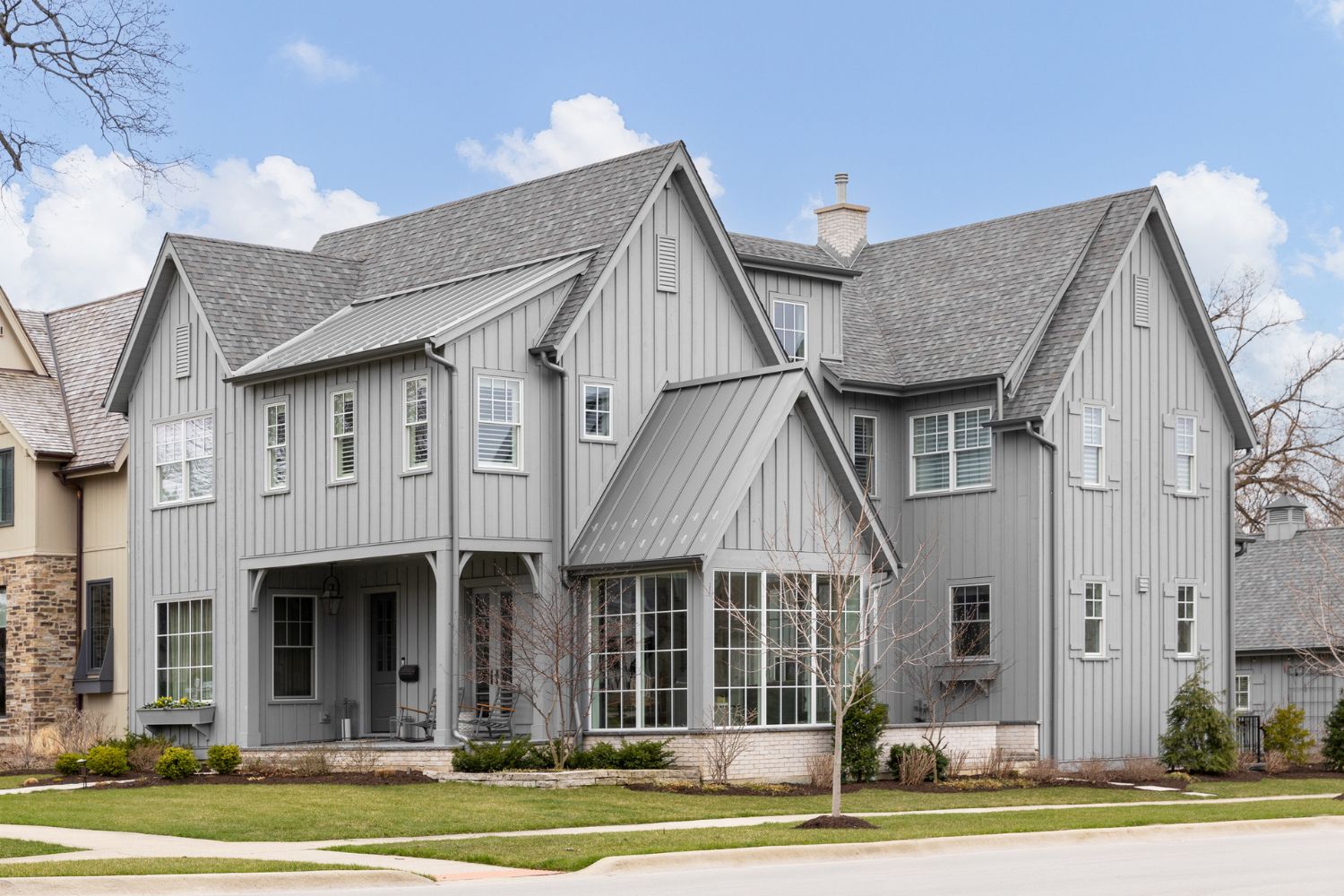
Board and Batten Siding Installation: DIY vs. Hiring a Professional
DIY projects are a great way to keep the home looking good without breaking the bank to pay for renovations, repairs, and upgrades, but homeowners will want to keep in mind that not all home renovation projects are suitable for DIY. For instance, while DIY board and batten installation is possible for individuals with the skills, experience, proper tools (such as one of the best siding nailers), materials, and the time to spend working on the outside of the home, it isn’t recommended for beginner DIYers or those who do not have a lot of time to spare.
Instead, homeowners can hire professional installers to assess the home, provide a project estimate, source the material, and complete the installation. Not only can these professionals get the job done quickly, but the quality of the board and batten siding finish is typically higher than if the same job were completed by a DIYer. This isn’t because the DIYer doesn’t have skill; it’s simply due to the level of skill and accumulated experience professionals have from working with board and batten siding day in and day out for years.
How to Save Money on Board and Batten Siding Cost
Replacing the siding on the home can be a time-consuming and costly endeavor that ranges from $4,000 to $14,000, on average. With this in mind, it’s recommended that homeowners find ways to cut the costs of the project without affecting the quality. When it comes to saving money on board and batten siding, there are a few methods to help keep the overall cost down. Consider these options for reducing the cost of the project, saving on labor costs, and getting the best value for the work.
- Get multiple quotes. Research and get job estimates from at least three reputable companies in the area to ensure that you get the best value for the job.
- Select inexpensive materials for the project. Opt for affordable materials instead of investing in premium materials that can drive the cost beyond the budget cap.
- DIY part of the job. DIYers can reduce the labor costs by removing old siding, cleaning up the job site, and disposing of waste.
- Plan the installation for the offseason. Summer is the peak season for exterior renovations, so the homeowner may be able to get a reduced rate for this work if they book the project during the early spring or late fall.
Questions to Ask About Board and Batten Siding Installation
Generally, when a homeowner hires a company or an independent contractor for work around the home, it’s because the homeowner doesn’t have the skill and experience or time to complete the project. With this in mind, it’s only natural that the homeowner has a list of pressing questions to find out more about the material costs, installation process, warranties, and the installation company. Homeowners will want to ask the contractor or the customer service staff the following questions in order to better understand what to expect during the board and batten siding installation project.
- How long have you been in business?
- Are you and all workers licensed, bonded, and insured?
- How often do you install this type of siding?
- Do you have a website or portfolio where I can view photos of similar jobs?
- If repairs are needed in the future, how is that handled?
- Can you provide references?
- What is your policy for solving customer grievances and complaints?
- Do you use subcontractors, or will you be doing the installation?
- Will you handle the permit acquisition?
- How long will the installation take?
- What materials are you most experienced with?
- What materials are you least experienced with?
- Does the estimate include all materials, labor, permit fees, and cleanup?
- What color options are available?
- Do you charge extra to remove and dispose of the old siding?
- How do I clean and maintain the siding after installation?
- Who will be my main point of contact during the installation?
- When is payment expected?
- What other costs might come up during this kind of job?
- Does the installation come with a workmanship warranty?
- What does the warranty cover?
FAQs
Regardless of whether the homeowner is replacing old board and batten siding or making the switch from a previous siding style to board and batten siding, it’s important for them to learn as much as possible about the installation process, project costs, and the benefits to board and batten siding.
Q. Does board and batten siding add value to a home?
Replacing old, worn siding with new board and batten siding is an effective way to increase the appeal of the home. New siding can improve the value of the property by up to 85 percent of the installation cost.
Q. Is board and batten siding hard to maintain?
The durability, long life, and damage resistance of board and batten siding make it relatively easy to maintain. Simply wash the siding once or twice a year and keep up with any necessary repairs to ensure the siding remains in good condition for decades.
Q. How long does it take to install board and batten siding?
The exact length of time for the board and batten siding installation varies depending on the size, design, and accessibility of the home. The specific materials used for this job can also impact the timeline, but it will typically take about 1 to 2 weeks to complete a board and batten siding installation job. Smaller projects, such as a DIY board and batten wall, will likely take less time and can be completed by a handy homeowner.
Q. What is the lifespan of board and batten siding?
The lifespan of board and batten siding ranges depending on the siding material. Expect the siding to last about 20 to 30 years for engineered wood, 20 to 40 years for wood siding products, 50 to 100 years for fiber cement siding, 30 to 40 years for vinyl siding, and 40 to 70 years for metal board and batten siding.
Q. Does board and batten siding need insulation?
Board and batten siding is designed to increase the exterior insulation qualities of the home. This means that insulation may not be necessary when homeowners are installing board and batten siding, though homeowners are typically advised to invest in insulation to help protect against moisture while reducing the transfer of heat through the walls of the home.
Sources: Angi, HomeAdvisor, HomeGuide, Today’s Homeowner

